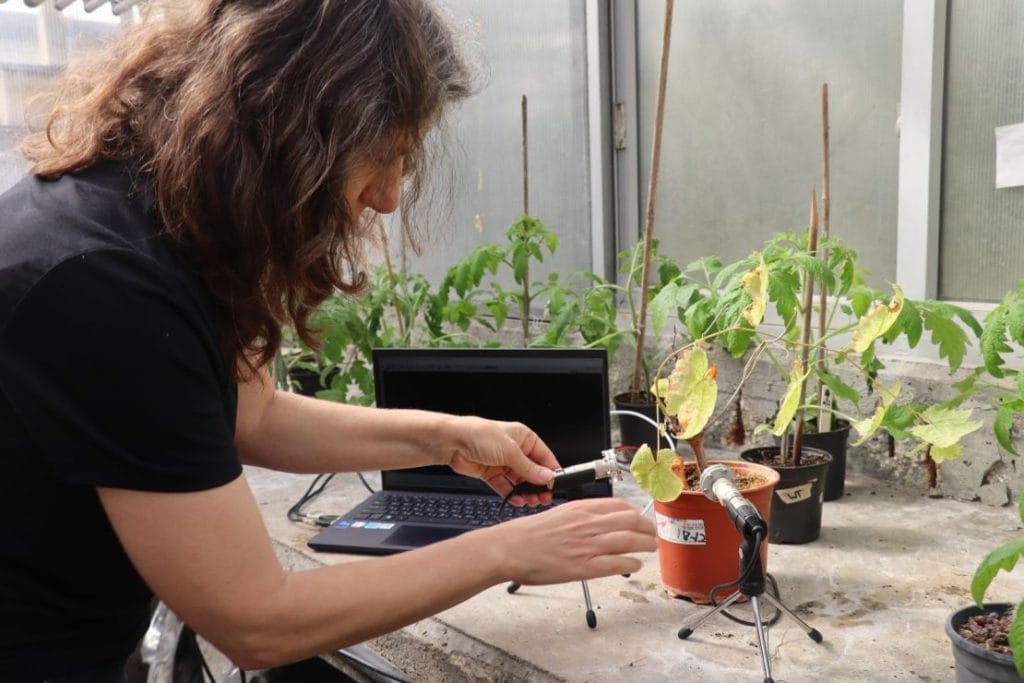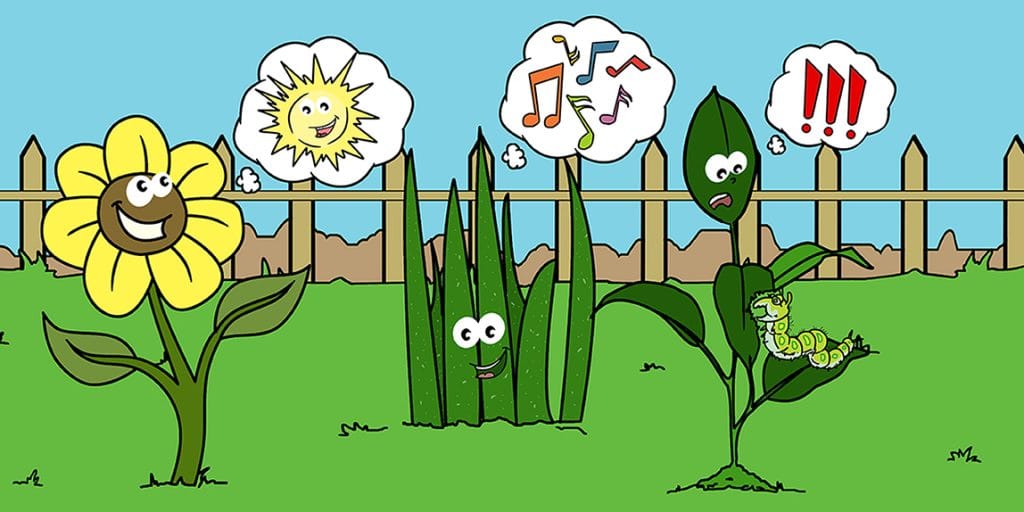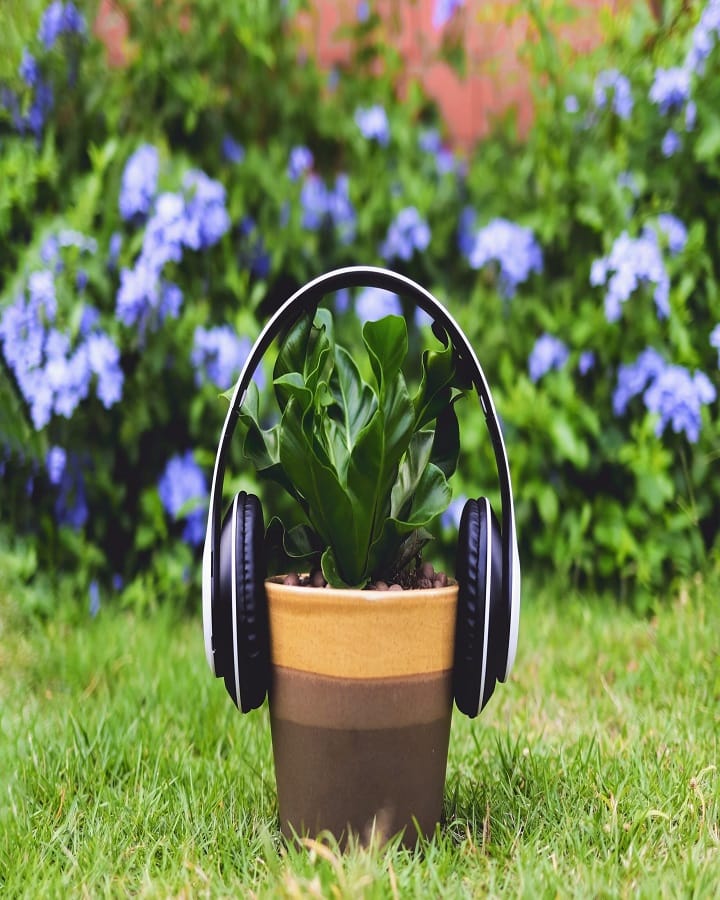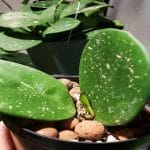
Image Credit – Hema
For generations, people have believed that speaking kindly to plants can help them thrive. Whether it’s singing to houseplants, playing soft music in the garden, or whispering words of encouragement, this practice has fascinated scientists and gardeners alike. The central idea is rooted in Talking to Plants and Vibrations — the belief that sound waves and vibrations created by speech or music may positively influence plant growth. But does this really work, or is it simply a gardening myth? Let’s dive into the science, history, and practical applications of this intriguing topic.
Talking to Plants and Vibrations: Can Sound Really Boost Growth?

The Connection Between Plants and Vibrations
Plants may not have ears like humans, but they do sense and respond to their environment in unique ways. Sound is essentially a vibration that travels through air or soil, and plants are sensitive to such subtle changes. The concept of Talking to Plants and Vibrations suggests that when we speak or play music near plants, the vibrations could stimulate their biological processes, potentially improving growth, nutrient absorption, or resilience.
Research has shown that plants respond to external stimuli such as light, touch, and even gravity. Similarly, vibrations from sound might act as another form of environmental signal. Just as a breeze or touch can influence plant direction and strength, sound waves might affect growth patterns.
Scientific Evidence: Myth or Reality?
The question of whether Talking to Plants and Vibrations truly impacts growth has been studied for decades. Some experiments suggest that plants exposed to sound grow faster or healthier compared to those left in silence. For instance, certain studies have shown that classical music and rhythmic sounds can encourage more robust growth, while loud, harsh noises may stunt development.
Scientists believe that sound waves may influence gene expression, enzyme activity, or water uptake in plants. In fact, some studies on crop plants suggest that specific sound frequencies can stimulate root development, improve germination rates, and even enhance resistance to pests. While more research is still needed, the growing body of evidence leans toward sound having a measurable effect on plants.
Cultural Beliefs and Traditional Practices
Long before scientific studies began, many cultures embraced the practice of talking to plants. Ancient farmers and indigenous communities often sang to their crops, believing that sound encouraged fertility and abundance. In some traditions, music was played in fields as part of rituals to ensure healthy harvests. These practices highlight that the link between Talking to Plants and Vibrations is not just modern curiosity but a deeply rooted belief in human history.
Practical Ways to Try It Yourself
If you’re curious about experimenting with Talking to Plants and Vibrations, here are some easy approaches:
- Speak Kindly – Spend a few minutes each day near your plants, talking in a calm, gentle voice.
- Play Music – Soft classical, instrumental, or nature-inspired sounds are considered beneficial.
- Use Consistency – Make it a routine; plants respond better to regular care and interaction.
- Observe and Record – Track your plants’ growth, leaf color, and overall health to notice any differences.
While sound alone won’t replace proper watering, soil care, and sunlight, it may give your plants a little extra boost.
Myths vs. Facts
- Myth: Talking to plants provides them with carbon dioxide from our breath, which is why they grow better.
- Fact: While exhaled carbon dioxide does play a role, the vibrations from sound waves seem to have a larger impact.
- Myth: All kinds of music help plants grow.
- Fact: Harsh, loud, or erratic sounds may actually stress plants instead of helping them.
The idea of Talking to Plants and Vibrations bridges science, tradition, and human curiosity. While plants don’t “hear” in the way we do, they are highly sensitive to vibrations in their surroundings. Studies and cultural practices alike suggest that sound may positively influence growth, making talking, singing, or playing music a simple yet fascinating way to connect with your plants. So, the next time you’re watering your favorite fern or tending to your garden, try sharing a few kind words — you may be giving them more than just water and sunlight.
Frequently Asked Question
Does talking to plants and vibrations really help them grow?
Yes, many studies suggest that talking to plants and vibrations can influence growth. Plants respond to sound vibrations, which may stimulate root development, improve nutrient absorption, and encourage healthier growth.
What type of sounds or music works best for plant growth?
Research shows that soft classical music, instrumental tunes, or gentle rhythmic vibrations are beneficial. In the context of Talking to Plants and Vibrations, calm and steady sounds work better than loud or harsh noise.
Is it better to talk to plants or play music for them?
Both methods can help! Talking to plants and vibrations provides a personal interaction, while playing soothing music ensures consistent exposure to sound waves. Combining both may give plants the best results.







